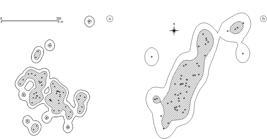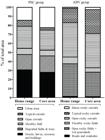The Cinereous Warbling-finch Poospiza cinerea (Emberizidae) is a Neotropical grassland bird considered rare, with population declining due to habitat loss and classified as vulnerable. However, the species conspicuously remains in several degraded areas, suggesting that it may be favored by these environments. Studies which focus on this species were inexistent until 2012, making questionable any statement about its threaten status. Here we analyzed population density, home range, and habitat selection of two groups of P. cinerea at independent sites that differ in human impact levels. Density was estimated by counting and mapping birds. Kernel density and minimum convex polygon were used to estimate home ranges. Habitat selection was inferred from use and availability of every habitat identified within the home range boundaries. One group positively selected urban tree vegetation, despite the availability of natural habitats in its home range. Based on a review on the literature and our findings, we assume that it is unlikely that P. cinerea is rare owing to habitat degradation, as previously thought. Nevertheless, this species was always recorded around native Cerrado vegetation and thus habitat modification may still threaten this species at some level. It is suggested that this species might be a woodland edge species, but future studies are necessary to confirm this assumption.
rare species; Brazilian cerrados; degraded habitats; threatened species; edge effect

 Thumbnail
Thumbnail
 Thumbnail
Thumbnail

